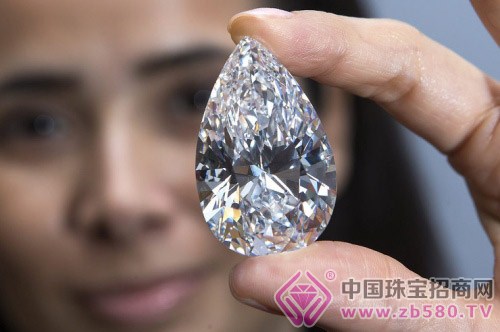As early as the late 18th century, it was scientifically confirmed that precious diamonds and ordinary graphite are composed of carbon atoms. When the carbon atoms are arranged in a hexagonal annular layer, a low-hardness high-temperature refractory material, graphite, is formed; when the carbon atoms are most closely packed in cubes and are covalently bonded to each other, they form the hardest in nature. Gemstone - diamond. It is now known that most of the carbon in the earth exists in the form of carbonates (such as limestone) and hydrocarbons (such as oil), although the volcanoes ejected from the depths of the mantle contain CO2 gas, which proves to be in the mantle. There is carbon, but the carbon content in the mantle is quite small. Determination of the isotopic composition of carbon in diamonds indicates that they are derived from the mantle. Then, the formation of a diamond with a special structure under the physico-chemical conditions of a small amount of carbon in the mantle has become an important issue in the study of diamond origin. So far, most of the world's diamonds are mainly found in kimberlite. The kimberlite is a kind of alkaline alkaline super-basic rock, which is mainly distributed in the deep fault zone of the stable area. It is characterized by blasting rock and volcanic neck, or rock wall and vein. The era is dominated by Cretaceous. The kimberlites are mostly dark, mostly gray-green. The mineral composition is very complex, with the original minerals of kimberlite, minerals from the upper mantle, the crust, and later altered minerals. Peridotite diamonds and eclogite diamonds are classified according to the characteristics of the carcass in the diamond-containing kimberlite. The inclusions of peridot diamonds indicate that they are formed at a temperature of 900-1300 ° C (average 1050 ° C) and a pressure of (45-60) × 108 Pa, equivalent to a depth of 120-180 km on the earth, from eclogite-type diamonds. The results obtained in the inclusions indicate that the formation temperature is about 1250 ° C, while the pressure data also shows that they may come from a greater depth (about 200 km) below 180 km. The temperature and pressure conditions for the formation of diamonds reflect the formation of diamonds in the mantle environment under the craton that is stable in the continental crust and that has been rarely deformed during the long geological era (since the Paleozoic). Because the temperature corresponding to the depth of the oceanic crust (up to 1500 ~ 1700 ° C) is higher than the crater. The stable Craton region on the earth now has North China Platform and Yangtze Platform in Canada, Southern Africa, Brazil, Australia, Siberia and China. The output of diamonds is precisely related to the thick lithosphere in these areas. Through the high temperature and high pressure test in the laboratory, the stability domain of carbon in different states is established, and the possible formation temperature and pressure of the diamond are inferred. From the high temperature and high pressure experiments, it can be known that the high temperature, especially the high pressure, can form coarse particles and transparent. Colored octahedral diamonds. If the pressure is stable and the temperature drops rapidly, the diamond is still in a stable state; on the contrary, if the temperature is stable, the pressure drops rapidly, which easily leads to dislocation slip of the crystal structure of the diamond, and induces lattice defects, causing a part of the originally colorless diamond to become Brownish yellow, brownish yellow, the diamond gradually graphitized. Therefore, the primary condition for the formation of diamonds is the colorless and transparent diamond formed under high temperature and high pressure. During the ascent, the pressure should remain basically the same or the rate of decline is very slow. However, in the open system of the earth, especially when approaching the surface, the pressure will drop rapidly. In the process of magma rising, it is necessary to keep the temperature and pressure from changing. First, the magma rise speed must be fast. The diamond-containing kimberly magma rises at a speed of 70km/h and reaches the surface in a few hours. This speed can meet the above requirements. In addition, the formation of diamonds is closely related to its formation, production environment and so on. Floral Fabric,Textile Printing,Cow Print Fabric,Rayon Poplin Print Fabrics Shaoxing Ruby Textile Co., Ltd , https://www.sxrubytex.com